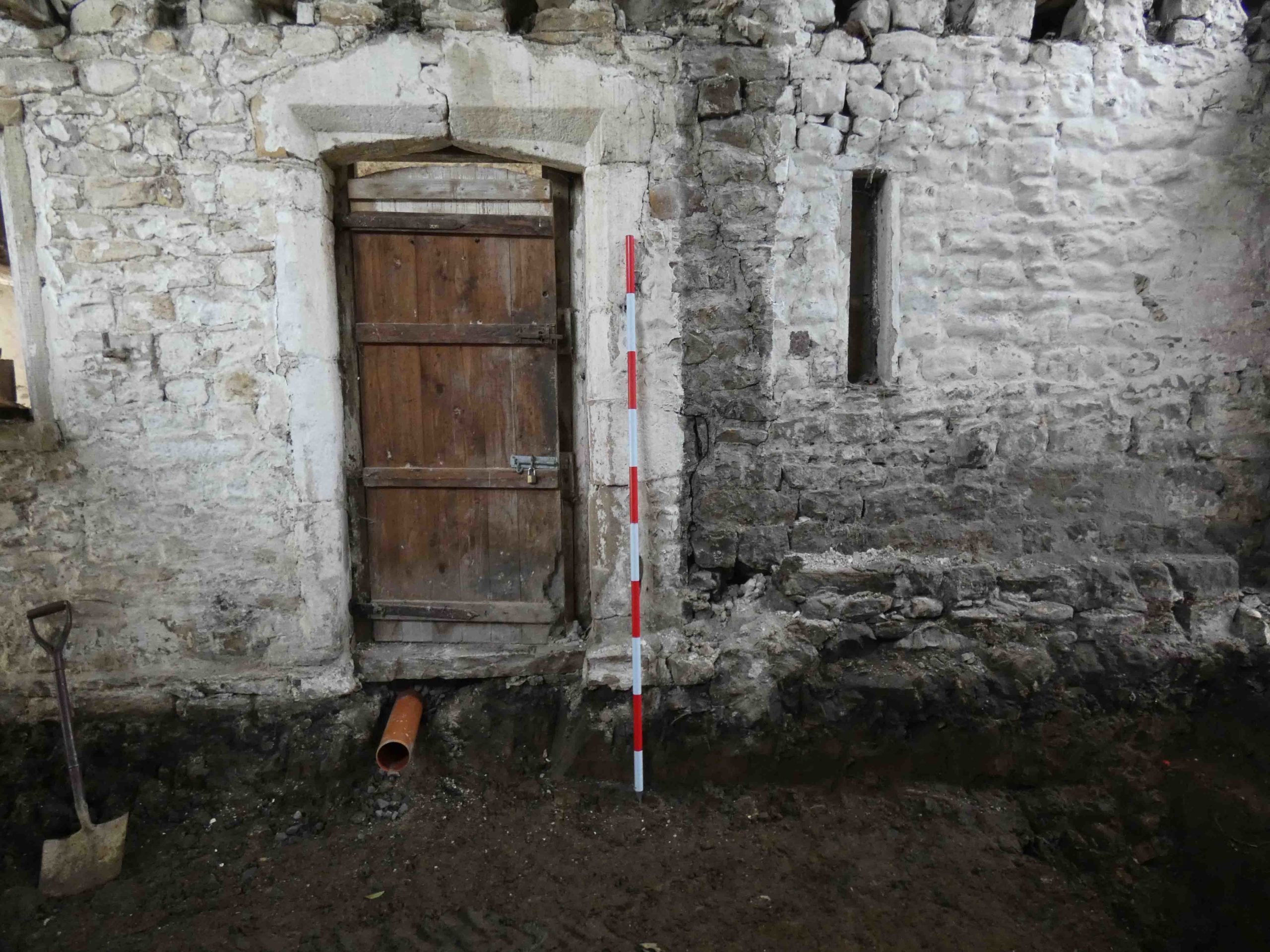Barn at Manor House, Howgill Lane, Rimington, Lancashire: Archaeological Watching Brief
Following the submission of a planning application for the conversion of a former barn at Manor House, Howgill Lane, Rimington, Lancashire into a dwelling, a condition was placed on the decision notice by Ribble Valley Borough Council, following advice by the Lancashire Archaeological Advisory Service, requiring that a record of the structure be made beforehand, and that groundworks be monitored. Following the provision of a project design by Greenlane Archaeology a building recording was undertaken in June 2018 and the watching brief element was carried out on 20th and 27th October 2021. This report deals with the watching brief element of the planning condition. The results of the building recording form a separate report.
The site is located within a wider area of archaeological remains spanning the prehistoric period onwards, although significantly it is thought to be on the line of the Roman road between the fort at Ribchester and Elslack/Ilkley. The origins of the house are uncertain although the name Manor House, which is used from at least the 1890s, suggests that it related to a local manor but it is not clear which one. Rimington and Middop are both mentioned in the Domesday survey; Rimington is an Old English name suggesting even earlier origins, and Rimington manor is recorded from the 12th century but there was another property in Rimington itself known as the Old Manor House. The map regression shows that the main north-east/south-west block of buildings at Manor House was built before 1846 and the block to the rear was added before 1893. Another possibly open-sided building stood to the north-east end of the main block at this point, but this has since been removed.
The buildings at Manor House retain much of their original fabric and there is evidence for late medieval fabric surviving within the barn building, which perhaps indicates that it was indeed the site of an early manor house, however, substantial changes have been made to the building, including the conversion of the upstairs space to the rear in the 1970s or 80s, removal of cattle stalls on the ground floor, and various window and door openings have been added to the exterior. The building as it now stands is not considered to be of great historical significance with the majority of it dating to the 18th century or later and demonstrating a fairly typical range of alterations for a building of this type.
The watching brief monitored excavation of trenches along the inside edge of the walls of the building after the removal of the internal floors and dividing walls. Although no archaeological features were observed, an unstratified pipkin handle demonstrates medieval activity at the site. The remainder of the few finds that were recovered were all of post-medieval date.
The full report will be made available on the Archaeology Data Service website.




